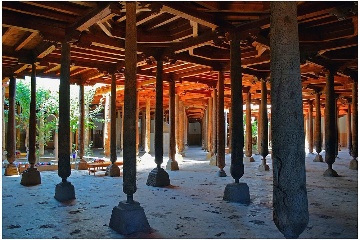
Step into the timeless embrace of Juma Mosque, where centuries whisper through 212 elm columns rising like a sacred forest. Dating to the 10th century but reborn in 1788, this architectural marvel blends Arab ingenuity with Central Asian resilience. Sunlight filters through cleverly placed apertures, casting geometric patterns across worn prayer rugs, while the air hums with echoes of a thousand Friday prayers.
Climb the shadowy spiral staircase of the 47-meter minaret—your palms grazing cool, uneven stones worn smooth by pilgrims—to witness Khiva's terracotta skyline unfurling beneath you. Among the columns, trace history with your fingertips: seven ancient survivors from the original mosque stand sentinel, their camel-wool-clad bases a silent testament to medieval moisture-fighting brilliance.
Here, time collapses. The scent of aged wood mingles with frankincense as worshippers gather beneath the cavernous roof, their murmured Arabic blending with the creak of wooden beams—a living bridge between Timurid grandeur and modern devotion. This isn't just a mosque; it's a tactile chronicle of faith's endurance.




































